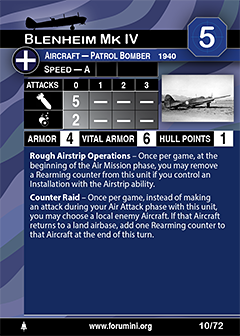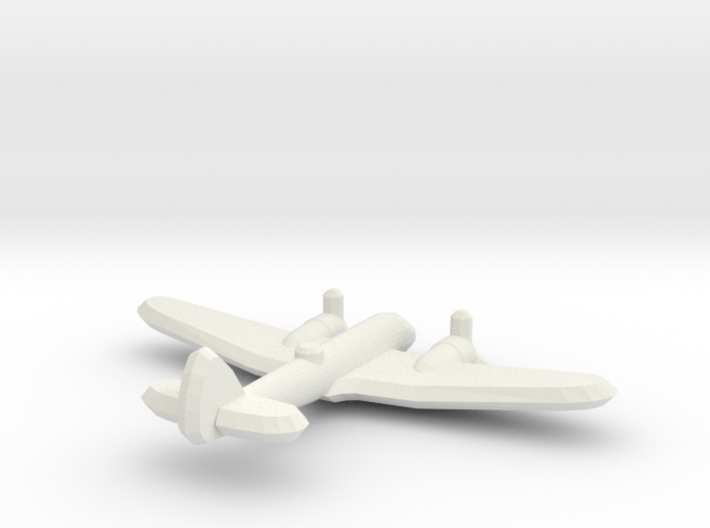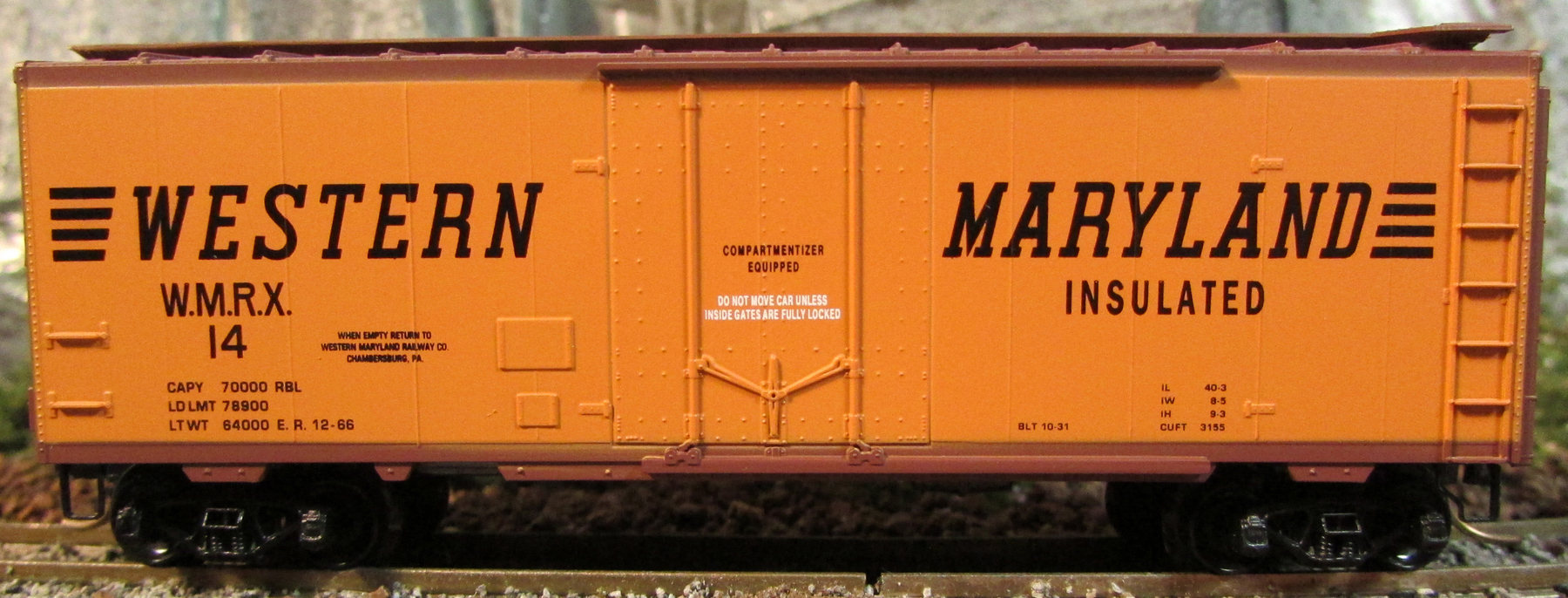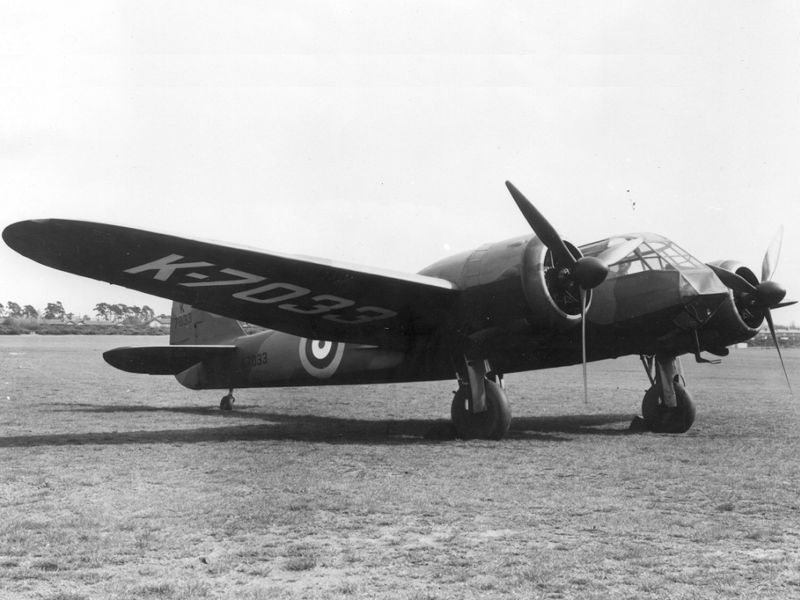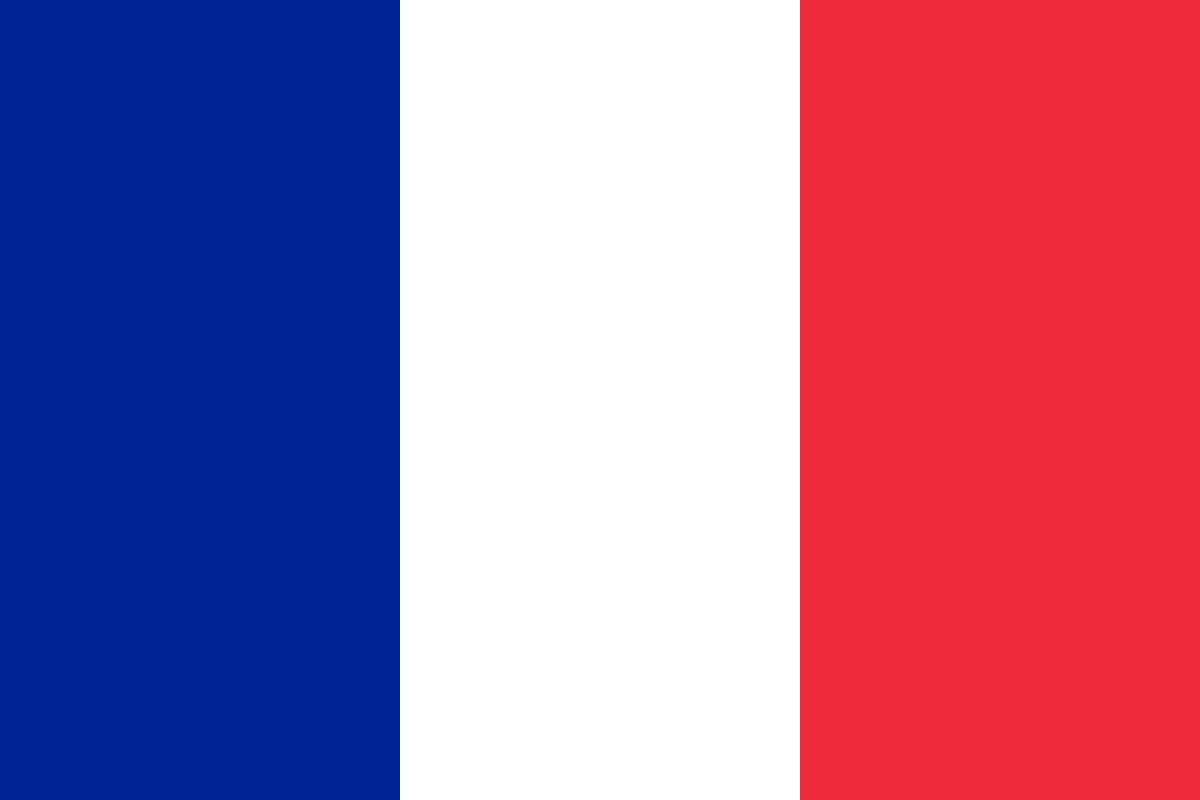Aircraft History: The Bristol Blenheim is a British light bomber aircraft designed and built by the Bristol Aeroplane Company (Bristol) which was used extensively in the first two years and in some cases throughout the Second World War. The aircraft was developed as Type 142, a civil airliner, in response to a challenge from Lord Rothermere to produce the fastest commercial aircraft in Europe. The Type 142 first flew in April 1935, and the Air Ministry, impressed by its performance, ordered a modified design as the Type 142M for the Royal Air Force (RAF) as a bomber. Deliveries of the newly named Blenheim to RAF squadrons commenced on 10 March 1937.
A development of the Type 142M was the Type 149 which Bristol named the Bolingbroke, retrospectively changed by the Air Ministry to Blenheim Mk IV and the Type 142M to the Blenheim Mk I. Fairchild Canada built the Type 149 under licence as the Bolingbroke. Blenheims Mk I and the Mk IV were adapted as fighters by the addition of a gun pack of four Browning .303 machine guns in the bomb bay. The Mk IV was used as a long range fighter and as a maritime patrol aircraft; both aircraft were used as bomber/gunnery trainers.
The Blenheim was one of the first British aircraft with an all-metal stressed-skin construction, retractable landing gear, flaps, a powered gun turret and variable-pitch propellers. The Mk I was faster than most fighters in the late 1930s but the advance in development of monoplane fighters made all bombers more vulnerable particularly if flown in daylight, though it proved successful as a night fighter. The Blenheim was effective as a bomber but many were shot down. Both Blenheim types were used by overseas operators, being licence built in Yugoslavia and Finland.
A development of the Type 142M was the Type 149 which Bristol named the Bolingbroke, retrospectively changed by the Air Ministry to Blenheim Mk IV and the Type 142M to the Blenheim Mk I. Fairchild Canada built the Type 149 under licence as the Bolingbroke. Blenheims Mk I and the Mk IV were adapted as fighters by the addition of a gun pack of four Browning .303 machine guns in the bomb bay. The Mk IV was used as a long range fighter and as a maritime patrol aircraft; both aircraft were used as bomber/gunnery trainers.
The Blenheim was one of the first British aircraft with an all-metal stressed-skin construction, retractable landing gear, flaps, a powered gun turret and variable-pitch propellers. The Mk I was faster than most fighters in the late 1930s but the advance in development of monoplane fighters made all bombers more vulnerable particularly if flown in daylight, though it proved successful as a night fighter. The Blenheim was effective as a bomber but many were shot down. Both Blenheim types were used by overseas operators, being licence built in Yugoslavia and Finland.
Manufacturer: The Bristol Aeroplane Company, originally the British and Colonial Aeroplane Company, was both one of the first and one of the most important British aviation companies, designing and manufacturing both airframes and aircraft engines. Notable aircraft produced by the company include the 'Boxkite', the Bristol Fighter, the Bulldog, the Blenheim, the Beaufighter, and the Britannia, and much of the preliminary work which led to the Concorde was carried out by the company. In 1956 its major operations were split into Bristol Aircraft and Bristol Aero Engines. In 1959, Bristol Aircraft merged with several major British aircraft companies to form the British Aircraft Corporation (BAC) and Bristol Aero Engines merged with Armstrong Siddeley to form Bristol Siddeley.
BAC went on to become a founding component of the nationalised British Aerospace, now BAE Systems. Bristol Siddeley was purchased by Rolls-Royce in 1966, who continued to develop and market Bristol-designed engines. The BAC works were in Filton, about 4 miles (6 km) north of Bristol city centre. BAE Systems, Airbus, Rolls Royce, MBDA and GKN still have a presence at the Filton site where the Bristol Aeroplane Company was located.
BAC went on to become a founding component of the nationalised British Aerospace, now BAE Systems. Bristol Siddeley was purchased by Rolls-Royce in 1966, who continued to develop and market Bristol-designed engines. The BAC works were in Filton, about 4 miles (6 km) north of Bristol city centre. BAE Systems, Airbus, Rolls Royce, MBDA and GKN still have a presence at the Filton site where the Bristol Aeroplane Company was located.
Country: France is one of Europe’s largest countries. It is bordered by six countries other nations: Germany, Belgium and Luxembourg to the northeast, Switzerland and Italy to the southeast and Spain to the southwest. The United Kingdom borders France via the English Channel. The country is considered to be the gateway to Europe as there are several large international airports (two of these can be found in Paris), ferry terminals and the French rail service.
In 486, Frankish tribes unified under Merovingian kingship. In 843, Western Francia was established from the division of the Carolingian Empire. In 1789, the French monarchy was overthrown, and in 1792, the First French Republic was founded. In 1958, the Fifth French Republic was established.
In 486, Frankish tribes unified under Merovingian kingship. In 843, Western Francia was established from the division of the Carolingian Empire. In 1789, the French monarchy was overthrown, and in 1792, the First French Republic was founded. In 1958, the Fifth French Republic was established.
Item created by: gdm on 2019-12-10 08:55:14. Last edited by gdm on 2022-10-10 12:25:26
If you see errors or missing data in this entry, please feel free to log in and edit it. Anyone with a Gmail account can log in instantly.
If you see errors or missing data in this entry, please feel free to log in and edit it. Anyone with a Gmail account can log in instantly.


